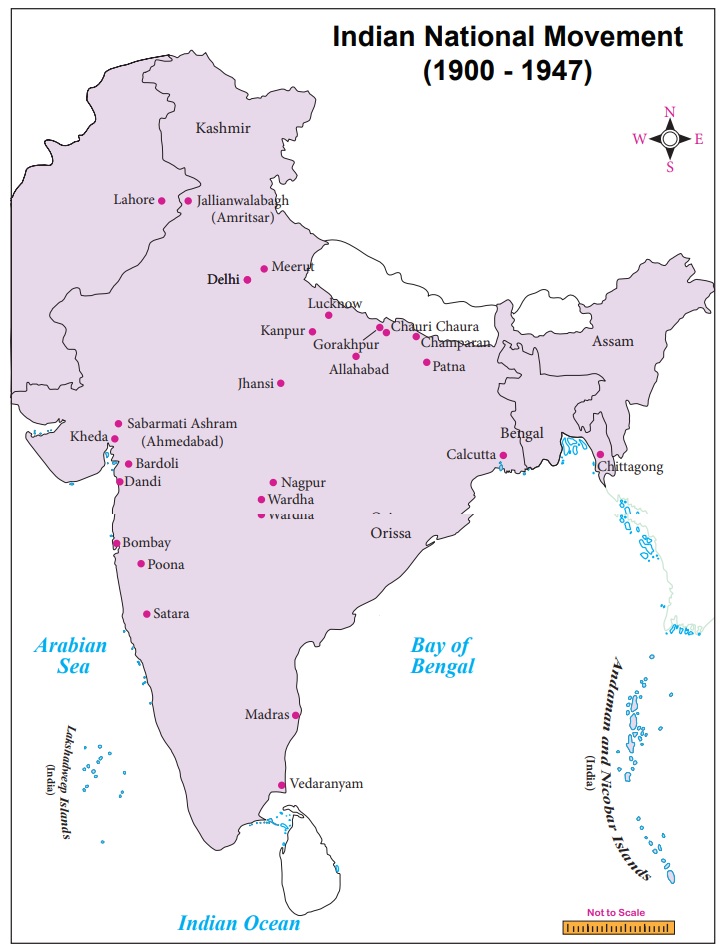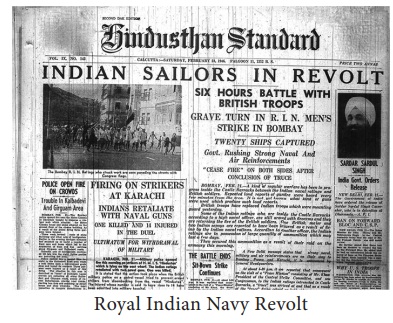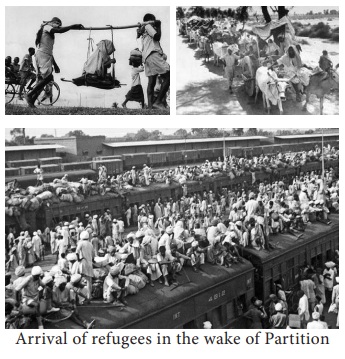India Nationalism: Gandhian Phase - Towards Freedom | 10th Social Science : History : Chapter 8 : Nationalism: Gandhian Phase
Chapter: 10th Social Science : History : Chapter 8 : Nationalism: Gandhian Phase
Towards Freedom
Towards Freedom
(a) Royal Indian Navy Revolt
The Royal
Indian Navy ratings revolted at Bombay in February 1946. It soon spread to
other stations involving more than 20,000 ratings. Similar strikes occurred in
the Indian Air Force and the Indian Signal Corps at Jabalpur. Thus the British
hegemonic control ceased even in the armed forces.

(b) Negotiating Independence: Simla Conference
The
Wavell Plan was announced on 14 June 1945. It provided for an interim
government, with an equal number of Hindus and Muslims in the ViceroyŌĆÖs
Executive Council. All portfolios, except war portfolio, was to be held by
Indian ministers. However, in the Simla Conference, the Congress and the Muslim
League could not come to an agreement. Jinnah demanded that all the Muslim
members should be from the Muslim League and they should have a veto on all
important matters. In the provincial elections held in early 1946 the Congress
won most of the general seats and the Muslim League won most of the seats
reserved for the Muslims thus bolstering its claim.

(c) Cabinet Mission
In
Britain, the Labour Party had won a landslide victory and Clement Atlee became
the Prime Minister. He declared that he wanted to transfer power at the
earliest. He sent a Cabinet Mission comprising Pethick Lawrence, Sir Strafford
Cripps and A.V.ŌĆēAlexander. Rejecting the demand for Pakistan, it provided for a
Federal government with control over defence, communications and foreign
affairs. The provinces were divided into three groups viz. Non-Muslim Majority
Provinces, Muslim Majority Provinces in the Northwest and the Muslim Majority
Provinces in the Northeast. A Constituent Assembly was to be elected and an
interim government set up with representation for all the communities. The Congress
and the Muslim League accepted the plan. However, both interpreted it
differently.
(d) Direct Action Day Call by Muslim League
Difference
arose between Congress and Muslim League when the former nominated a Muslim
member. The League argued it was to be the sole representative of the Muslims
and withdrew its approval. Jinnah declared 16 August 1946 as the ŌĆśDirect Action
DayŌĆÖ. Hartals and demonstrations took place which soon turned into Hindu-Muslim
conflict. It spread to other districts of Bengal. The district of Noakhali was
the worst affected.
(e) Mountbatten Plan
The
interim government headed by Jawaharlal Nehru was formed in September 1946.
After some hesitation the Muslim League joined it in October 1946. Its
representative Liaqat Ali Khan was made the Finance Member. In February 1947,
Clement Atlee declared that power would be transferred by June 1948. Lord
Mountbatten was sent as Viceroy to India with the specific task of transfer of
power. On 3 June 1947 the Mountbatten Plan was announced. It proposed:
ŌĆó Power
would be transferred on the basis of dominion status to India and Pakistan.
ŌĆó Princely
states would have to join either India or Pakistan.
ŌĆó Boundary
commission was to be set up under Radcliffe Brown and the award would be
announced after the transfer of power.
ŌĆó Punjab
and Bengal Legislative Assemblies would vote on whether they should be
partitioned.

(f) Independence and Partition
The
Mountbatten Plan was given effect by the enactment of the Indian Independence
Act on 18 July 1947 by the British Parliament. The Act abolished the
sovereignty of the British Parliament over India. India was partitioned into
two dominions ŌĆō India and Pakistan. On 15 August 1947 India won independence.
Related Topics